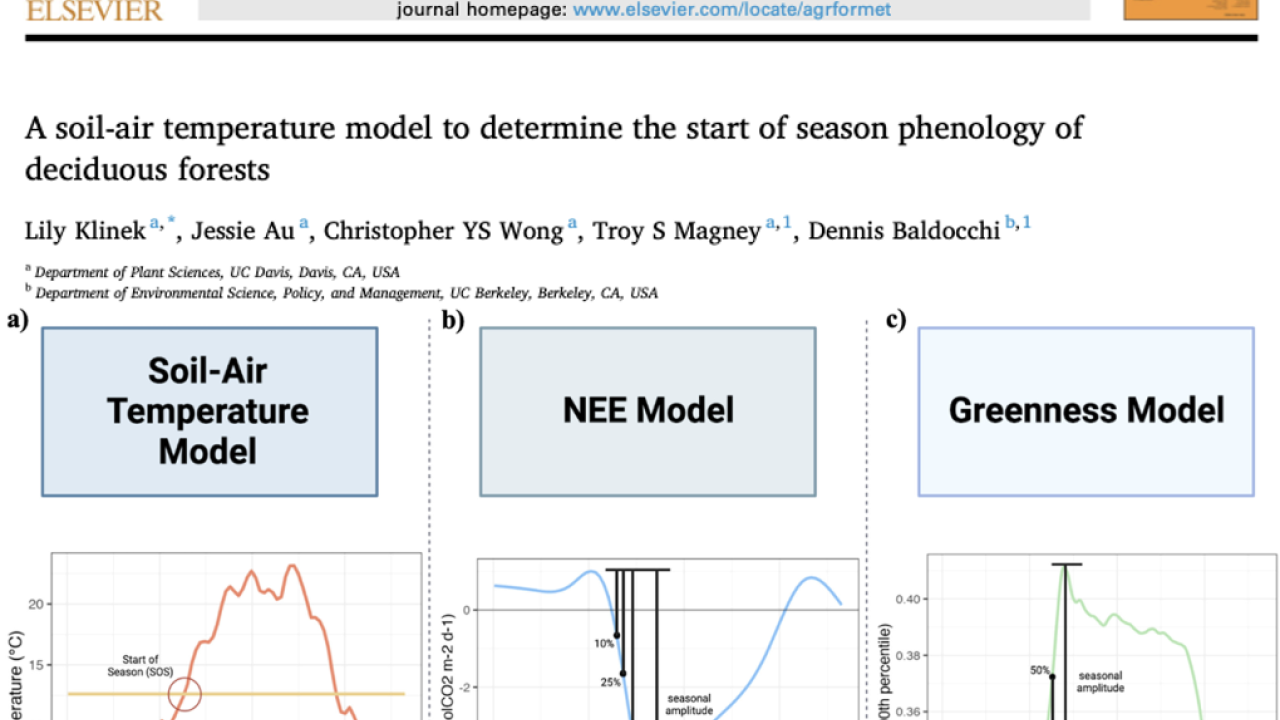
New lab paper led by Lily as part of the AmeriFlux special issue!
In deciduous forests, can we predict leaf-out w/ Phenocam and net carbon uptake using a simple soil-air temperature model first proposed by Baldocchi et al., 2005?
This work started as Lily's undergrad thesis at Berkeley and uses longer time series to test the model across a broader range of functional groups, climates, and biomes.
The main take-aways are:
- Soil and air temperature can be used to predict start of growing season.
- Highest model concordance found in temperate mid-latitude deciduous forests.
- Altered dynamics exhibited in high latitude sites and extreme climate sites.
Paper abstract:
Forest ecosystems play a major role in sequestering atmospheric carbon dioxide, which can help offset the detrimental effects of anthropogenic carbon emissions. However, climate change has and will continue to affect the phenology of forest ecosystems’ carbon uptake, changing both the “carbon uptake transition date” - when forests shift from being a net carbon source to sink - and the “green-up date” reflecting the onset of bud burst. Previous studies have shown that a forest's carbon uptake transition date correlates to the date when soil temperature warms enough to surpass mean annual air temperature (soil-air temperature model). However, we still don't know if this simple relationship holds across different sites or over longer time periods. In this study, we explore the relationship between climate and both types of phenological transition dates using over 200 site years of data between 1997 and 2022. Using flux tower data from 18 sites across North America and Europe, we derive three potential carbon uptake transition dates corresponding to the dates when 10%, 25%, and 50% of seasonal net ecosystem exchange (NEE) amplitude is reached. Using PhenoCam data, we then derive three potential green-up dates corresponding to when 10%, 25%, and 50% of total seasonal green chromatic coordinate (GCC) is reached (the greenness model). We evaluate our model estimates using concordance coefficients, a metric of agreement between two measures, to determine which process, carbon uptake or budburst, is best predicted by the soil-air temperature model and to what extent. We find that variation in phenological relationships can be attributed to different regional and bioclimatic groups, highlighting potential biome-specific strengths and limitations of the soil-air temperature model. This model offers a simple approach to better understand phenological transitions and identify potential and limitations for a simple universal SOS prediction approach in deciduous forests.
Link here!
https://www.sciencedirect.com/science/article/pii/S0168192323003295?via%3Dihub